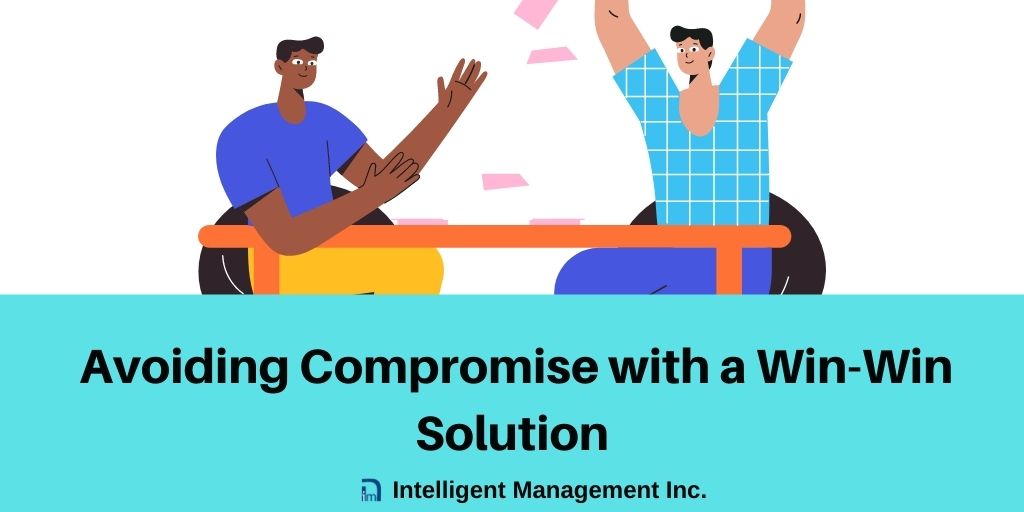
I recently re-posted on LinkedIn something from Goldratt Consulting with a quote from Dr. Goldratt:
“Our fear that conflicts will lead to a tug of war diverts management attention to constantly struggle with unacceptable compromises.”
This is part of the introduction to a book Dr. Goldratt was working on called ‘The Science of Management’ before his passing in 2011 at age 64. Sadly, he never completed this book. One of my connections on LinkedIn saw my post and asked the question:
“I agree that the Thinking Processes are vital to solving a problem. I struggle with the parameters of a “win-win” solution. So many people do not negotiate or act in good faith. Also, what makes a compromise unacceptable?”
I am grateful to Charlie Barton for her great question and it deserves a blog post to provide a decent answer. Bear in mind that for the Founders of Intelligent Management, the Theory of Constraints has been a central part of our lives and livelihood for over two decades. One of the reasons it continually inspires and enriches our work is precisely because of the win-win principle that lies at its heart.
Why are compromises unacceptable?
Coming to a compromise may seem like an enlightened way of finding some sort of “agreement” among people where there are different points of view about desired outcomes. It is something that politicians engage in constantly. The problem with a compromise is that it is not a real solution: it leaves one side, or possibly both sides, dissatisfied. Not only that, but a compromise will very probably lead to negative knock-on effects over time. Someone, and possibly everyone, loses. Frustration, resentment and reduced creativity and productivity can result.

Photo by Tom Wilson on Unsplash
What is win-win?
Win-win is not just a nice phrase or wishful thinking. It is the most sustainable way of interacting with others, whether it be in a family or business context. By sustainable, I mean in a variety of ways: emotionally, financially, economically, and indeed ecologically. This is because a win-win solution is a systemic solution – one that by definition takes into consideration all the stakeholders in a given situation.
The challenge is to find a way to develop a solution that is truly win-win and to be able to do so systematically and repeatably. This is something that Dr. Goldratt achieved with the Thinking Processes. They provide a true and trustworthy process for achieving win-win. There are, however, some conditions for this process to be applicable.
Win-win and a common goal
A win-win solution is only possible when there is a common goal. The Theory of Constraints as organizational science looks at an organization as a system and a system, as Dr. Deming taught us, is a network of interdependent components that work together to try to accomplish the aim (goal) of the system. So, by definition, for everyone in the organization there is a common goal. In an organization with a clearly defined goal, there is no space for hidden agendas or being in bad faith.

Photo by Randy Fath on Unsplash
Win-win and transparency
The Thinking Processes are designed to reveal unverbalized assumptions and mental models and identify the legitimate needs that drive positions of conflict. This is the process that enables people to overcome perceived conflict. To be able to surface and challenge assumptions freely and spontaneously, there has to be an atmosphere of honesty and transparency. If people are afraid of the consequences of speaking up then they will not be able to do this.
The Thinking Processes both enable and require transparency and good faith and these are fundamental for any organization to pursue a common goal. Win-win solutions are systemic solutions that have a plurality of positive implications. However, they require people to be willing to challenge their own assumptions.
Win-win and the future
Dr. Goldratt came from a line of illustrious rabbis and experts in Talmudic thinking where a natural part of the interaction lies in debating and challenging assumptions. One of the greatest scholars of the 20th century, Rav Menachem Mendel Schneerson, taught through Chasidic philosophy that by taking a seeming conflict to a higher level of reasoning, we can always find a solution.
Compromise is not necessary if we are open to challenging our assumptions and we have a common goal. Just knowing that this is a possibility and that we have a method to achieve it gives us hope and confidence that we can co-create a future where the outcomes are for the benefit of all. That is the only sustainable way ahead.

Photo by Charlein Gracia on Unsplash
Intelligent Management works with decision makers with the authority and responsibility to make meaningful change. We have helped dozens of organizations to adopt a systemic approach to manage complexity and radically improve performance and growth for 25 years through our Decalogue management methodology. The Network of Projects organization design we developed is supported by our Ess3ntial software for multi-project finite scheduling based on the Critical Chain algorithm.
See our latest books Moving the Chains: An Operational Solution for Embracing Complexity in the Digital Age by our Founder Dr. Domenico Lepore, The Human Constraint – a digital business novel that has sold in 43 countries so far by Dr. Angela Montgomery and ‘Quality, Involvement, Flow: The Systemic Organization’ from CRC Press, New York by Dr. Domenico Lepore, Dr. .Angela Montgomery and Dr. Giovanni Siepe





Leave a Reply